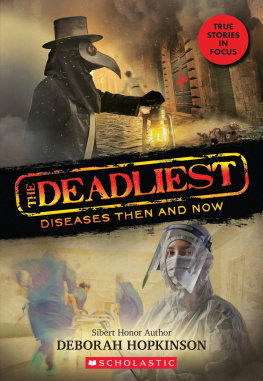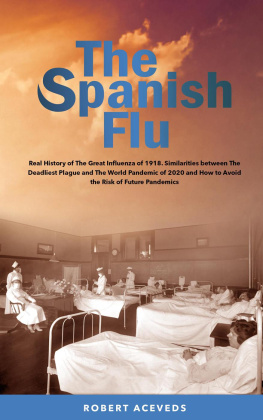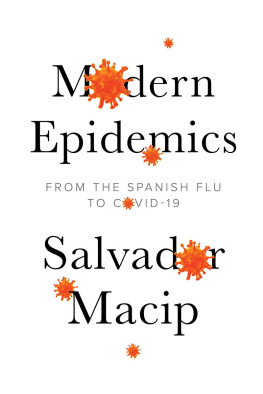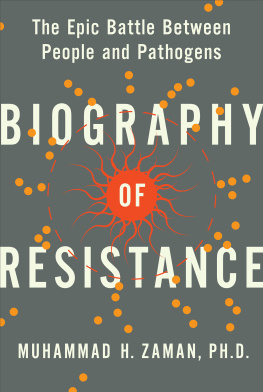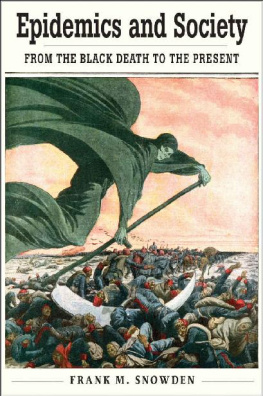DUEL WITHOUT END

DUEL
WITHOUT
END
Mankinds Battle with Microbes
STIG S. FRLAND
Translated by John Irons
REAKTION BOOKS
Published by
REAKTION BOOKS LTD
Unit 32, Waterside
4448 Wharf Road
London N1 7UX, UK
www.reaktionbooks.co.uk
First published in English 2022
Copyright Stig Sophus Frland 2022
First published in Norwegian as Kampen mellom mennesket
og mikrobene, Stig Sophus Frland 2020
This translation has been published with the financial support of NORLA

All rights reserved
No part of this publication may be reproduced, stored in a retrieval system or transmitted, in any form or by any means, electronic, mechanical, photocopying, recording or otherwise, without the prior permission of the publishers
Page references in the Photo Acknowledgements and
Index match the printed edition of this book.
Printed and bound in India by Replika Press Pvt. Ltd
A catalogue record for this book is available from the British Library
eISBN 9781789145069
Contents
Foreword
THROUGHOUT HUMAN HISTORY a duel has been fought between man and microbes. This has not only led to countless infectious diseases and an inconceivable number of deaths but has had far-reaching consequences for culture and society.
For several years after the Second World War there was a widespread belief that the era of infectious diseases as a serious threat was over. This turned out to be a formidable miscalculation. Not only have many of the well-known infectious diseases held their own in many parts of the world, but over the past decades we have also encountered a large number of previously unknown microbes that have caused life-threatening disease problems and, to a certain extent, major epidemics. The HIV, Ebola, SARS and COVID-19 viruses are just a few characters in the sinister cast of microbes that have appeared on the scene. The mass media constantly come up with announcements of new infectious diseases and epidemic threats.
We now know that the duel between man and microbes is an ongoing affair and that it will continue for as long as humanity exists on this earth. But we also know far more about the factors that influence the outcome of this eternal duel, including the consequences of the ever-increasing, man-made changes to nature around us. The new knowledge gleaned about the connection between infection and ecology is important for our duel against microbes in the future.
The new insight into the interaction between man and the world of microbes has shown itself to be useful in trying to understand the history of human infection through the ages. In recent years we have also seen an increased understanding of the importance of infectious diseases and epidemics for the course of history.
This book provides an updated presentation of the eternal duel between man and microbes and the many factors that influence its outcome. I describe the major transitions in the history of human infection from the time when the first representatives of Homo sapiens roamed the African savannahs. I also deal with a number of the large epidemics that have affected humanity through history, of which the Black Death is just one of many examples. One chapter is devoted to the significance that many of these epidemics may have had for the downfall of civilizations and empires. Some of the new infectious diseases that were discovered from the second half of the twentieth century onwards are dealt with in separate chapters.
The book also deals with how man has fought back against microbes via vaccines and antibiotics. Here I describe a number of the microbial threats we will probably have to face in the future, and how we can combat them. This includes the constant threat from new epidemics and pandemics. From the beginning of 2020 the world has been confronting a new pandemic involving a formerly unknown coronavirus: SARS-CoV-2. We have been shown once again the considerable consequences a pandemic has for both the individual and society an echo from the pandemics of the past that have repeatedly shaken humanity. In the book I emphasize that the question is not whether we will encounter new pandemics in the future but when and which particular microbe from the multifarious world of microbes will be involved.
The history of human infectious diseases is dramatic and colourful. But it is also extremely comprehensive and complex. My project may thus appear to be highly ambitious. I have decided to write this book in spite of this for two main underlying reasons.
First, as a doctor I have spent practically all of my working life dealing with infectious diseases and the immune response to microbes, partly as a researcher, and partly as a clinician and doctor with patients. For a number of years I have also worked at many levels on one of the largest pandemics of recent times: the AIDS pandemic. I have been involved in much teaching and have given countless lectures on these subjects. Second, since my childhood I have had a burning interest in history, one that has not diminished over the years. With this dual background I succumbed to the temptation to combine my medicinal and historical interests.
The result is this book. It is not an academic thesis intended for specialists. The primary target group is interested readers without previous specialized knowledge. Even so, I have included a number of references for those who might wish to see something of the background of the material I am presenting.
If I am able to convey just a fraction of the fascination I myself have for this topic, I will be content.
Prologue: The Invisible Enemy
H omo sapiens our own species of the human race originally came from Africa. The first fossil finds of human types that manifestly looked like present-day humans were made in Africa and are more than 200,000, perhaps closer to 300,000, years old.
About 60,000 years ago some of our ancestors left Africa and gradually spread out over all the earths continents, with the exception of Antarctica. This, until now, has been the prevailing view,
The first humans doubtless faced many threats and challenges. Considerable changes in climate conditions put their adaptability to the test from tropical conditions on African savannahs to much cooler climates in temperate zones. Predatory animals of many kinds threatened our ancestors, including fearsome species that have long since become extinct, such as the sabre-toothed tiger and huge types of cave bear. Even so, human beings managed to develop strategies to survive these visible threats, although many lives must unquestionably have been lost in the struggle.
From the outset, however, our ancestors were exposed to other threats, at least as dangerous, about which they were unaware: attacks from invisible enemies, microorganisms that can cause infectious diseases. Bacteria, viruses, fungi and other microorganisms have been the cause of acute and chronic, deadly and more harmless infections.
Throughout our entire history of development, a duel has been taking place between man and microorganisms a never-ending duel that is still being fought and will continue to be so for as long as humans exist on the planet. This duel has had enormous consequences for



